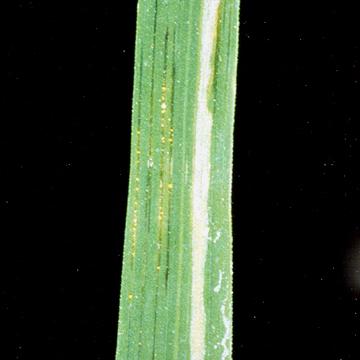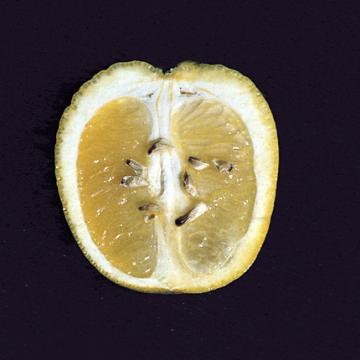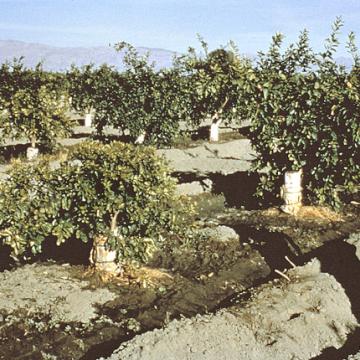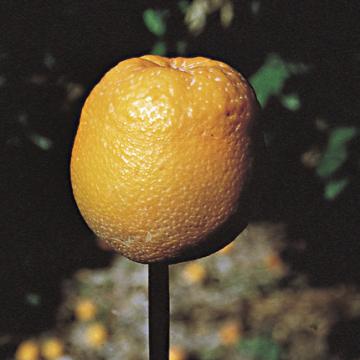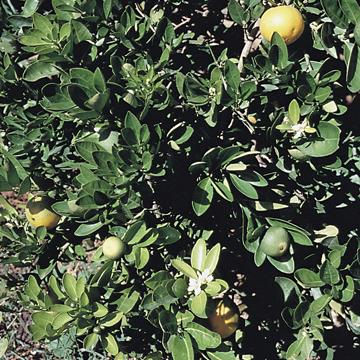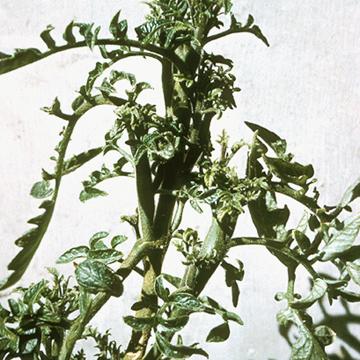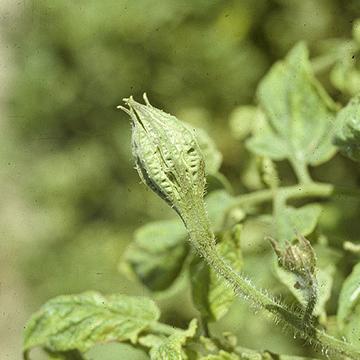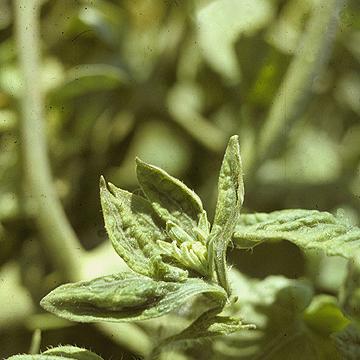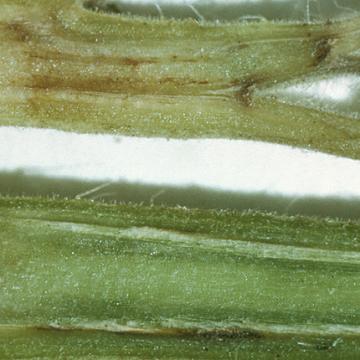DISEASE: Bacterial blight and bacterial leaf streak
HOST: Rice
Xanthomonas oryzae pv. oryzicola (bacterial leaf streak) causes water-soaked streaks with yellow ooze (left side), and X. oryzae pv. oryzae (bacterial blight) causes brown streaks that have turned white (right side).
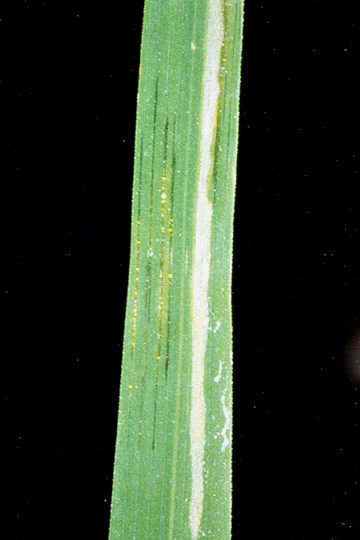
Bacterial blight and bacterial leaf streak | Rice
DISEASE: Bacterial blight and bacterial leaf streak
HOST: Rice (Oryza sativa)
PATHOGEN: Xanthomonas oryzae pv. oryzicola
PATHOGEN SYNONYM: Xanthomonas campestris pv. oryzae
SOURCE: T. Mew
DISEASE: Citrus stubborn disease
HOST: Citrus (sp. unknown)
Characteristic symptoms of thickened peel at peduncle end and aborted seeds.
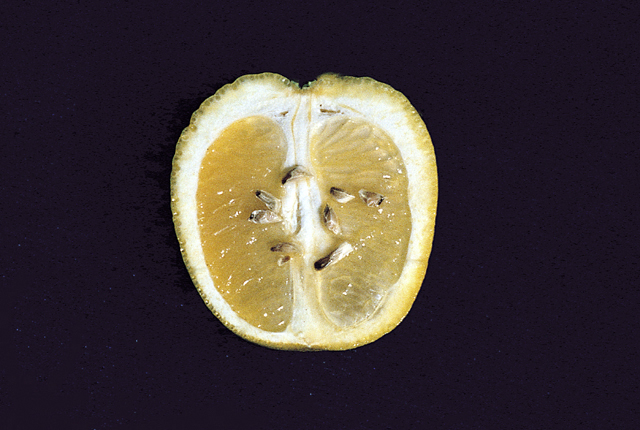
Citrus stubborn disease | Citrus (sp. unknown)
DISEASE: Citrus stubborn disease
HOST: Citrus (sp. unknown) (Citrus sp.)
PATHOGEN: Spiroplasma citri
SOURCE: APS
DISEASE: Citrus stubborn disease
HOST: Citrus (Orange)
Severely stunted sweet orange tree. Foliage is dense and abnormally upright. Leaves may be cupped and unusually thick. They also may be chlorotic and mottled.
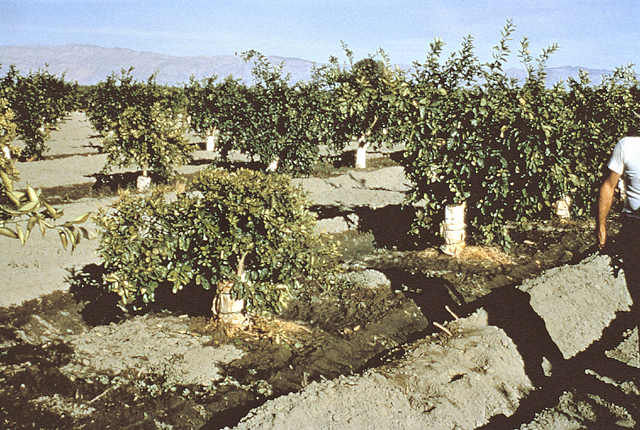
Citrus stubborn disease | Citrus (Orange)
DISEASE: Citrus stubborn disease
HOST: Citrus (Orange) (Citrus sinensis)
PATHOGEN: Spiroplasma citri
SOURCE: S. M. Garnsey
DISEASE: Citrus stubborn disease
HOST: Citrus (Orange)
Fruit from a diseased tree are frequently lopsided or acorn-shaped, usually few and small. They may not color at stem end.
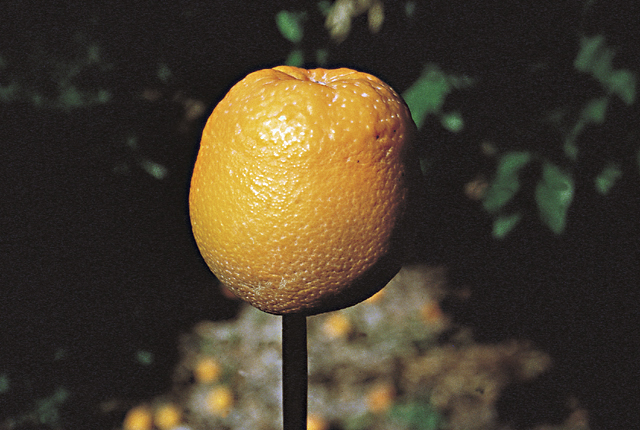
Citrus stubborn disease | Citrus (Orange)
DISEASE: Citrus stubborn disease
HOST: Citrus (Orange) (Citrus sinensis)
PATHOGEN: Spiroplasma citri
SOURCE: J. M. Bove, M. Garnier
DISEASE: Citrus stubborn disease
HOST: Citrus (Orange)
Sweet orange exhibiting off-season flowering and crop heterogeneity. Diseased trees generally have shoots with shortened internodes, which lead to rosettes with cupped leaves.
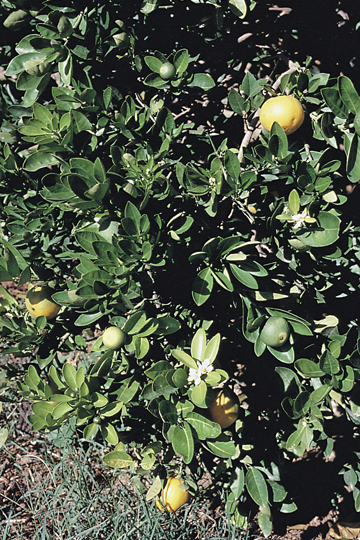
Citrus stubborn disease | Citrus (Orange)
DISEASE: Citrus stubborn disease
HOST: Citrus (Orange) (Citrus sinensis)
PATHOGEN: Spiroplasma citri
SOURCE: J. M. Bove, M. Garnier
DISEASE: Tomato big bud
HOST: Tomato
Characteristic symptoms are swollen, apical stems and stunted leaves. Apical stems are generally thickened and assume a stiff and erect growth habit. Internodes are shortened and flower buds are greatly enlarged.
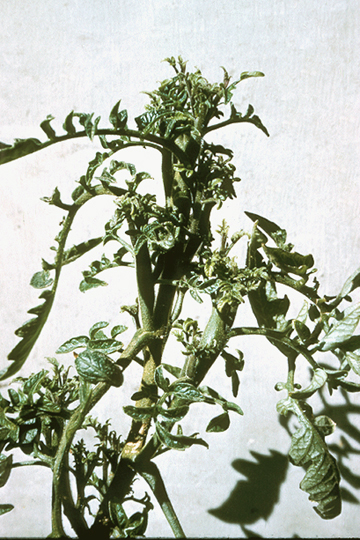
Tomato big bud | Tomato
DISEASE: Tomato big bud
HOST: Tomato (Lycopersicon esculentum)
PATHOGEN: 'Candidatus Phytoplasma asteris'
PATHOGEN SYNONYM: Phytoplasma Aster yellows group
SOURCE: D. Teakle
DISEASE: Tomato big bud
HOST: Tomato
Symptoms are enlarge sepals that do not separate. Flower buds stay green and do not develop into fruit. Leaves are small and chlorotic.
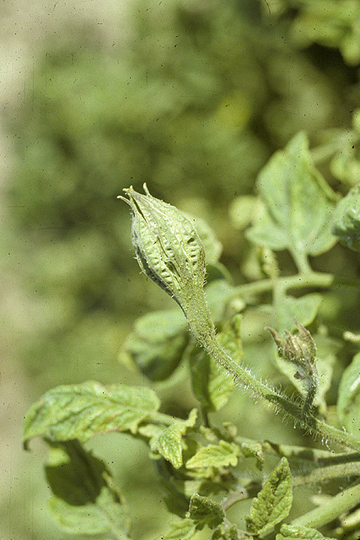
Tomato big bud | Tomato
DISEASE: Tomato big bud
HOST: Tomato (Lycopersicon esculentum)
PATHOGEN: 'Candidatus Phytoplasma asteris'
PATHOGEN SYNONYM: Phytoplasma Aster yellows group
SOURCE: S. Thomson
DISEASE: Tomato big bud
HOST: Tomato
Abnormal flower bud with greatly enlarged sepals. Sepals do not separate, fruit is not produced, and apical growth is upright.
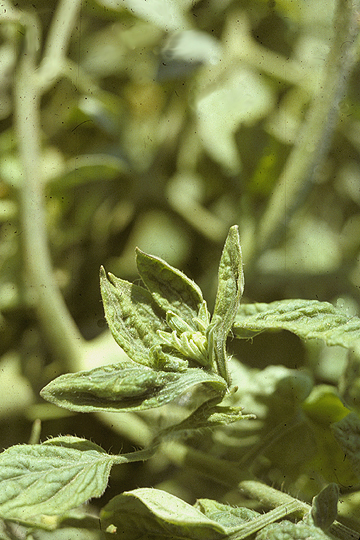
Tomato big bud | Tomato
DISEASE: Tomato big bud
HOST: Tomato (Lycopersicon esculentum)
PATHOGEN: 'Candidatus Phytoplasma asteris'
PATHOGEN SYNONYM: Phytoplasma Aster yellows group
SOURCE: S. Thomson


